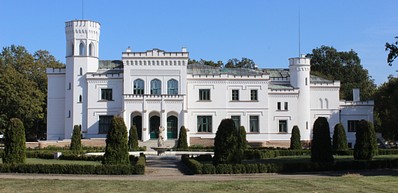
Castle in Kórnik
The beginnings of the Kórnik castle go back to the 15th century. Its current neo-Gothic form stems from the mid-19th century. Its interiors are filled with antique furniture from various styles and times, paintings and sculptures by Polish and European masters, antique coins, military accessories, and an ethnographic collection. A real gem is the library from 1828, with a unique collection of around 400 thousand volumes. Legend has it, that at night the castle is haunted by the ghost of Biała Dama - the White Lady.
Read more






























